"It's the dust that kills tree makers."
We are no longer building saddle trees, but we have two videos about how Western saddles fit horses available on our westernsaddlefit.com website.
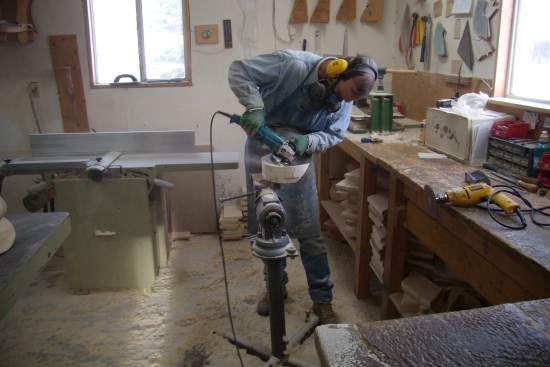
That is what we were told when we started up the business. And it is true. We know of at least one tree maker who is currently having respiratory problems probably as a result of wood dust. Being a natural substance, you would think that it would be OK. Nope. Super fine dust of any kind will affect your lungs. And some types of wood dust are toxic while others are carcinogenic. Fortunately, what we work with doesn’t fall into either of those categories (except maybe some fancy wood for exposed horns or other parts of trees), but the dust is still dangerous with long term exposure. So…
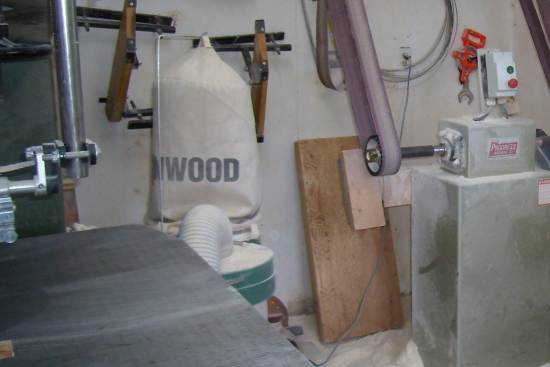
we started out with what most small scale wood workers start out with – a bag type dust collector. After a few years of living in dust masks and still snotting dust at the end of every day, we did some more research. We found that the small “dust collector” we had started with would collect the chips, but when it came to dust, it was more of a “dust pump” than a dust collector. As the bag type “dust collectors” circulate the air, they expel through the bag the really fine dust particles that get deep into your lungs and cause the problems. So…
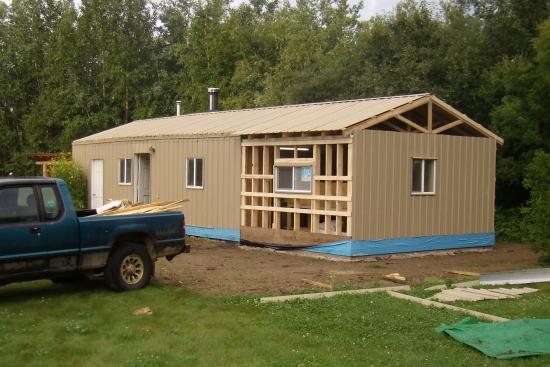
four and a half years ago we expanded the shop to make room for a good dust collection system. The expansion was needed simply because we didn’t have enough room in the shop for the cyclone. If we had built a larger shop in the first place, we wouldn’t have needed the expansion, but hindsight is 20-20. So…
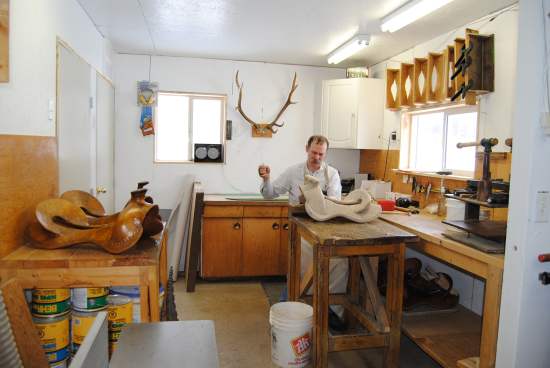
we added on two rooms and made the wood working section larger. The end door is to the cyclone room. So...
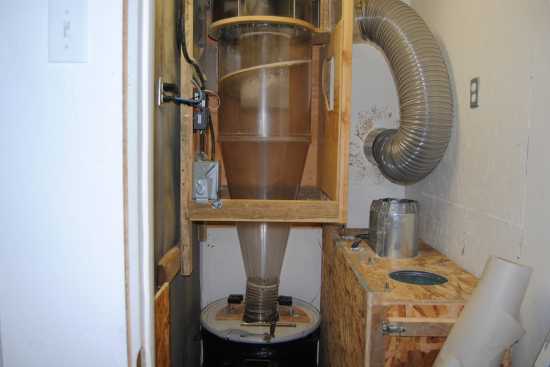
if you look through that door, you see the Clear Vue cyclone with the 5 HP Leeson motor and the 15” impeller that moves over 1400 cubic feet per minute of air. The intake chute that comes through the wall on the left brings the dust and chip filled air into the cyclone. As it is swirled around, the dust and chips fall down into the bin underneath. Somewhere just below the cyclone the air, having lost all the chips and almost all the dust, changes direction and goes up through the central tube, past the impeller and out the ducting on the top right. In the summer when it is warm, we vent this directly outside, which is the cheapest and most efficient way of removing the final bit of dust. But, at over 1400 cubic feet of air per minute, this unit can completely change out the air in our entire shop in less than 4 minutes. So…
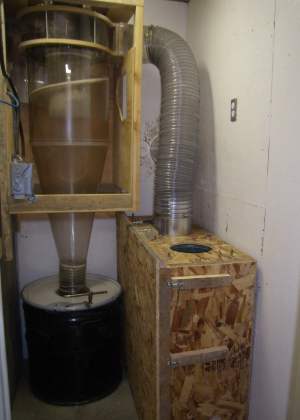
we have a filter set up that we use in the winter. There are two large filters inside the box that take out almost all the remaining fine dust in the air when it is too cold to keep the windows and/or door open to allow the replacement air in. This means we can recycle our heated air. But even with this system, Rod makes huge amounts of dust with his side grinder that is very difficult to catch. So…
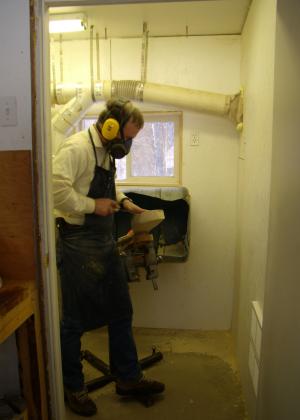
the door in the middle of the wall is to the 6 x 8 “dirty room” where Rod uses the side grinder all winter. He still has to wear his dust mask in there and there is still dust on the floor, but it is not nearly as bad as what the original shop was. And the air quality improves very quickly once he stops grinding because we have it set up so that the air will circulate just from his room to the filters, changing the air in that room 3 ½ times per minute. You will notice that the ducting in this room goes not just to the cyclone to the right, but also to the left, where it goes through that wall. So…
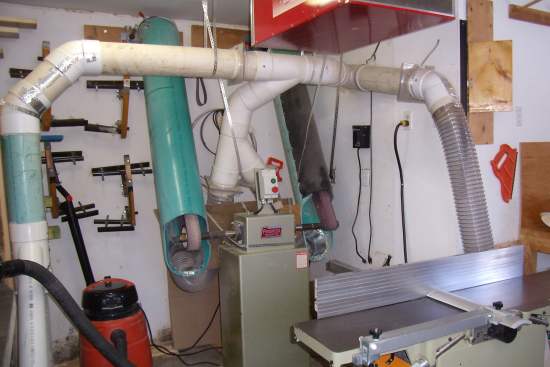
we can collect the dust from all the machines in the main woodworking area. The most important part of dust collection is to catch the dust at the source, and we use the systems in place to attach to the jointer/planer and the band saw. We had to get creative to enclose the belts on the sander, but by doing this, we have changed the belt sander to the cleanest machine in the shop. So…
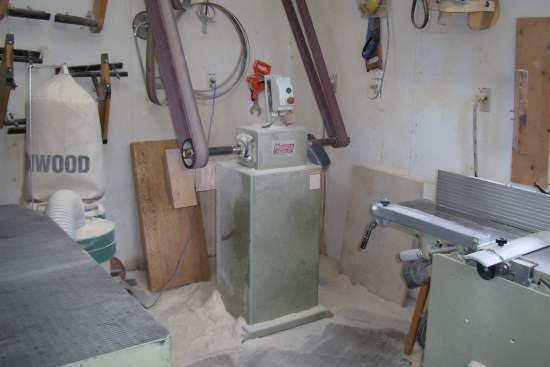
it doesn’t look like this any more. But even with all the equipment, there is still some dust that gets out. So…
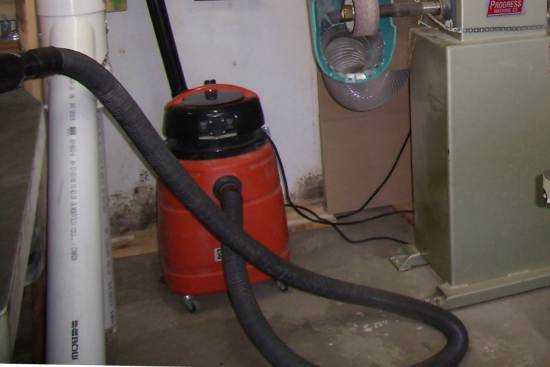
we have a good shop vac that we use to clean up the benches, floors etc. as needed. But not all the dust goes down the hole in the middle of the band saw table. So…
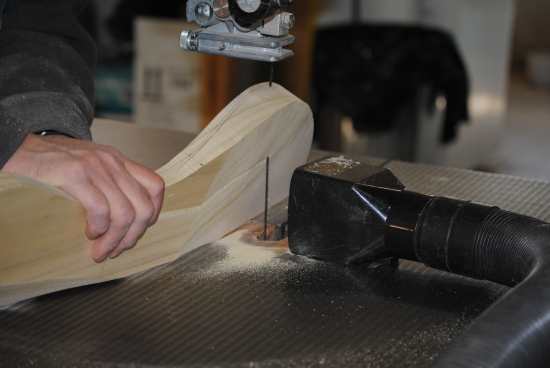
Rod also uses the shop vac along with the cyclone system when he cuts with the band saw. It really helps keep a lot of dust out of the air, but some still floats around. So…
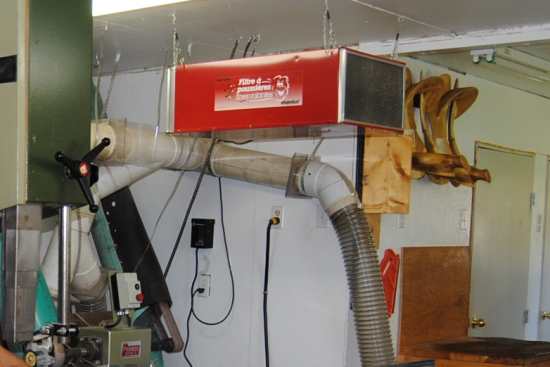
we have an air cleaner that runs on a timer for about half an hour in the evening after we are done for the day. (It usually is plugged in to the timer!) It has a very fine filter in it and acts to clean out the fine, floating dust before it settles, just to be stirred up the next day. But even with all this, we still end up with a build up of dust in the shop over time. So…
| Here is where the picture of us cleaning up the shop should be, except the stupidcomputer got a stupid virus and had to be cleaned up and I lost them all!! Please imagine... |
last week we spent the day with our niece Rachel (who also helped me put together Arnie, the skeleton) and did a flat out major shop clean. Washing down the ceiling and walls, ducts and equipment, taking everything off the benches and shelves and wiping them down, vacuuming everything we could, back flushing the filters and cleaning out the filter box, etc. etc. It took a whole day and we all worked to get it done in that much time, but we did!! So…
that was the impetus for this post…
By the way, if you want good information on dust collection, you can go to the site of the guy who started the revolution in small shop dust collection, Bill Pentz. Just know it will take some time to read it all…
